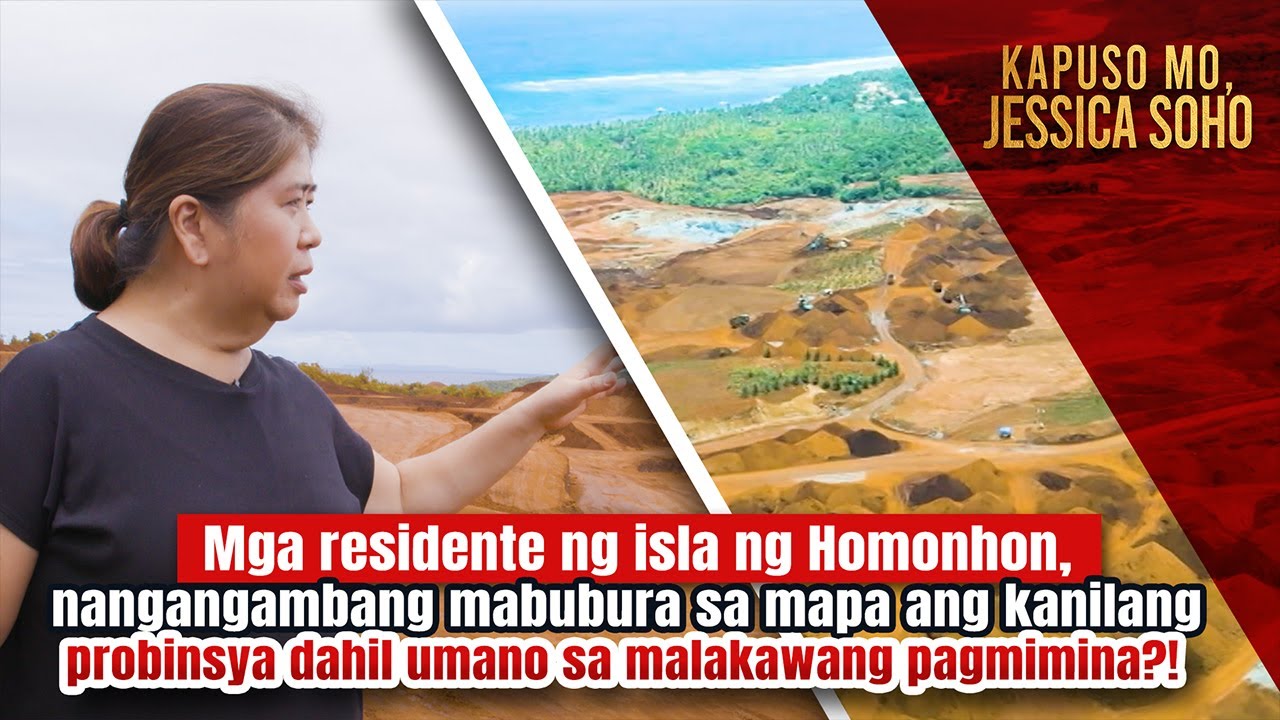Jessica Soho, inimbestigahan ang isyu sa pagmimina sa Homonhon Island | Kapuso Mo, Jessica Soho
Summary
TLDRIn 1521, Ferdinand Magellan's expedition landed on Homonhon Island, Eastern Samar, rich in resources. Today, locals fear large-scale mining operations for nickel and chromite will destroy their environment and livelihoods, relying on calamansi production. Despite protests and health concerns, mining continues, with companies claiming compliance and economic benefits. The community seeks a balance between development and environmental protection, fearing the loss of their island's natural beauty and resources.
Takeaways
- 🚩 Ferdinand Magellan landed on Homonhon Island in 1521, which is part of Guiuan, Eastern Samar.
- 🌊 The island is rich in marine and land resources, including a type of calamansi (a citrus fruit) considered as gold by the locals.
- 🏭 The island's resources, particularly nickel and chromite, are heavily mined and exported, causing significant environmental concerns.
- 🌳 The once lush forests and rich marine life are threatened by the mining operations, leading to health issues among the residents.
- 🗣️ Locals are fighting against the mining companies to protect their environment and way of life.
- 🏭 The mining companies claim to provide economic benefits and are legally permitted to operate, but locals argue that the permits were issued without proper consent.
- 💼 The debate over mining is intense, with the national government needing the revenue from mining but also facing pressure to protect the environment.
- 🌍 The island's geology is part of the Eastern Philippines opalite belt, rich in nickel and chromite, which are in high demand for industrial use.
- 🏫 The community is concerned about the impact of mining on their children's health and education, with reports of sickness and school absences.
- ⚖️ There is a call for a middle ground, where the church and other stakeholders are seeking a resolution that balances economic needs with environmental protection.
Q & A
What event occurred in 1521 on Homonhon Island?
-In 1521, the fleet of Ferdinand Magellan landed on Homonhon Island, which is part of the town of Guiuan in Eastern Samar.
What is the significance of Homonhon Island to the Philippines' history?
-Homonhon Island is historically significant as it was the first land sighted by Ferdinand Magellan upon reaching the Philippine archipelago.
What are the environmental concerns raised by the residents of Homonhon Island?
-Residents are concerned about the destruction of the environment due to mining activities, including the potential for the island to be erased from maps, the health issues arising from mining pollution, and the degradation of their gold calamansi (a local citrus fruit) production.
What are the economic activities of Homonhon Island?
-The island's economy is primarily driven by the cultivation of calamansi, which is processed into calamansi concentrate and sold for a living.
What are the health issues faced by the residents due to mining activities?
-Residents have reported health issues such as sickness, skin problems, and respiratory ailments they believe are caused by the continuous mining operations on the island.
What is the importance of calamansi to the residents of Homonhon Island?
-Calamansi is crucial to the island's economy and the livelihood of its residents, with some families relying on it for generations.
What are the concerns about the future of Homonhon Island if mining continues?
-There are fears that if mining continues, it will lead to the destruction of the island's environment, loss of biodiversity, and the collapse of the calamansi industry which is vital to the community.
What actions have the residents taken to protest against mining operations?
-Residents have staged rallies, sent messages to programs, and sought help from government agencies to stop mining operations that they believe are causing environmental damage.
What is the role of the local government and the Department of Natural Resources (DNR) in this issue?
-The local government and the DNR are involved in regulating and monitoring mining activities. They have received complaints and are responsible for ensuring that mining operations comply with environmental standards and do not harm the community or the environment.
What are the mining companies' responses to the concerns raised by the residents?
-The mining companies have varied responses, with some claiming they have the necessary permits and are operating legally, while others have temporarily suspended operations in contested areas.
What are the potential impacts of mining on the natural resources and environment of Homonhon Island?
-Mining can lead to deforestation, soil erosion, water pollution, and loss of biodiversity. The residents of Homonhon Island are particularly concerned about the long-term effects on their calamansi trees and the health of the island's ecosystem.
Outlines

このセクションは有料ユーザー限定です。 アクセスするには、アップグレードをお願いします。
今すぐアップグレードMindmap

このセクションは有料ユーザー限定です。 アクセスするには、アップグレードをお願いします。
今すぐアップグレードKeywords

このセクションは有料ユーザー限定です。 アクセスするには、アップグレードをお願いします。
今すぐアップグレードHighlights

このセクションは有料ユーザー限定です。 アクセスするには、アップグレードをお願いします。
今すぐアップグレードTranscripts

このセクションは有料ユーザー限定です。 アクセスするには、アップグレードをお願いします。
今すぐアップグレード関連動画をさらに表示

Mga taga-Homonhon, nangangamba para sa kanilang lugar dahil sa pagmimina?! | Kapuso Mo, Jessica Soho

Primay source: Pigafetta's Testimony on the route of Magellan's Expedition

ARALING PANLIPUNAN 7 (AP7) MATATAG Q2 Week 1 - Kolonyalismo at Imperyalismo with PPT and DLL

Pre-Colonial Philippines through the account of Antonio Pigafetta

Ferdinand Magellan and the Battle of Mactan

PENJELAJAHAN SAMUDRA BANGSA SPANYOL
5.0 / 5 (0 votes)
